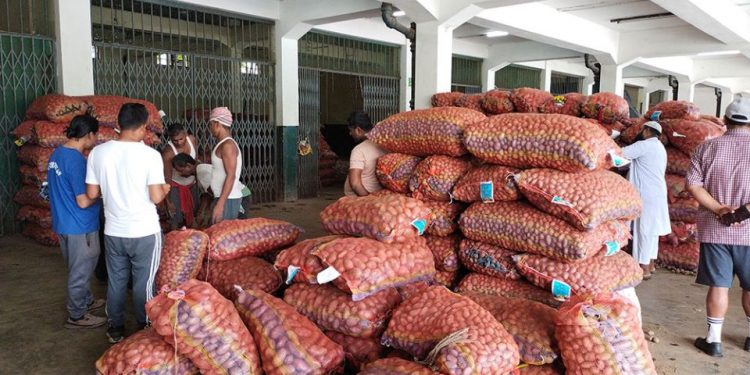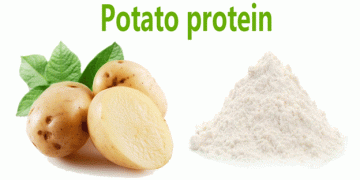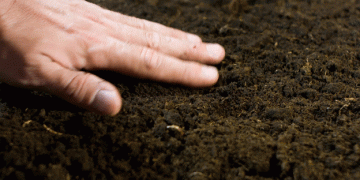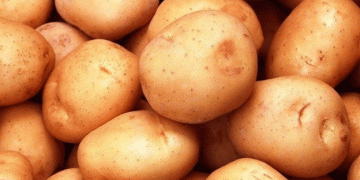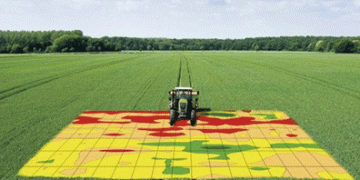In Samdrupjongkhar, the pricing of potatoes is influenced by several factors, including the output from neighboring Indian states, the costs associated with cold storage, and overall market demand. This year’s dip in prices has been linked to the sale of uncured potatoes and persistent rainfall, which have led to damage to the crops.
At the Samdrupjongkhar auction yard, the atmosphere is somber, mirroring the dreary weather conditions. The prices fetched for potatoes are not meeting farmers’ expectations, despite a slight improvement from the previous year.
The auction season kicked off earlier in the month, with prices initially climbing from Nu 25 to Nu 27 per kilogram over a span of three days before witnessing a decline.
In the previous week, large-sized potatoes were auctioned at Nu 27 per kilogram, but this price has since decreased to Nu 23. Medium-sized potatoes, which were going for Nu 20 to Nu 23 last week, are now being sold at Nu 19 per kilogram. Small-sized potatoes have seen a price drop from Nu 9-10 to Nu 19 per kilogram.
Farmers report that only the initial truckload on the first day of the auction managed to secure Nu 27 per kilogram. Subsequent prices have remained low.
As of June 23, a total of 15 truckloads, or 125 metric tonnes (MT) of potatoes, have been auctioned, generating Nu 2.8 million (M). Comparatively, during the same timeframe last year, seven truckloads amounting to 76 MT were auctioned, bringing in Nu 1.7 M.
The regional director of the Food Corporation of Bhutan (FCB), Ugyen, explains that if potato production in India is high and prices are low, most bidders opt for Indian potatoes, which are sold at an average of Rs eight per kilogram. This preference for the less expensive Indian potatoes leads to a decrease in prices for Bhutanese potatoes.
Ugyen anticipates a price increase once trading partners in Siliguri, India, begin purchasing Bhutanese potatoes for export to Nepal. However, these partners have yet to commence dealings with Nepalese buyers. Once trade begins, it is expected that farmers will be able to secure better prices.
The current situation has left farmers worried about their profitability, as many are unable to retain even half of their sales revenue after covering transportation costs and other expenses.
Several farmers have brought their potato harvests to the auction yard, motivated by the attractive prices seen last week. On average, each farmer contributes approximately 55-kg bags of potatoes to the auction. They remain hopeful for a price increase before the auction season concludes in December.
Farmers from regions such as Khaling, Yangnyer, Udzorong, Kanglung in Trashigang, Bumdeling in Trashiyangtse, and Dramitse in Mongar rely on the Samdrupjongkhar auction for selling their potatoes, which constitute their main source of income.
Sangay, a farmer from Udzorong, expressed the challenges in covering costs like transportation and labor from the proceeds of the sales. He highlighted the laborious process of loading and unloading the potatoes multiple times before reaching Samdrupjongkhar, as well as the requirement to sort the potatoes into four different sizes as per FCB’s standards.
Another farmer, Kinzang Tshering, transported 50 bags of potatoes to the auction yard earlier this week. He incurred a transportation fee of Nu 250 per bag and was disheartened to find that small-sized potatoes were only fetching Nu 10 at the auction, while the larger sizes were sold for Nu 23 per kilogram, a decrease from last year’s price range of Nu 23 to 25 per kilogram.
FCB officials are currently seeking additional bidders from Kolkata to improve the situation. While farmers typically wait for prices to rise, with last year’s peak reaching Nu 30 per kilogram, many have been eager to sell their potatoes this year due to rumors of favorable pricing.
